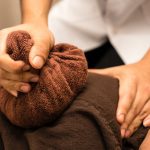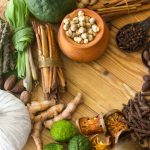- Introduction: Why Thai Herbs Belong in Your Home Rituals
- The Thai Herbal Edge: History, Everyday Uses & Gentle Benefits
- Part 1 — Health: Easy Thai Remedies You Can Brew or Rub
- Part 2 — Beauty: Glow-Giving Recipes with Thai Pantry Staples
- Part 3 — Smart Safety & Common-Sense Precautions
- Part 4 — Storing Herbs & Infusing Oils Like a Pro
- Your First 7-Day Thai Herbal Plan
- Conclusion: A Calm, Glowing Routine You’ll Actually Keep
- FAQs
Introduction: Why Thai Herbs Belong in Your Home Rituals
If you’ve been curious about DIY herbal remedies at home, Thailand’s kitchen garden is the perfect place to start. Everyday staples—lemongrass, ginger, turmeric, kaffir (makrut) lime, galangal, pandan, and aloe—do double duty as flavorful ingredients and gentle wellness helpers. In Traditional Thai approaches, herbs support balance: a steaming cup of lemongrass-ginger tea can ease a heavy day, while a simple turmeric face mask recipe helps brighten dull skin.
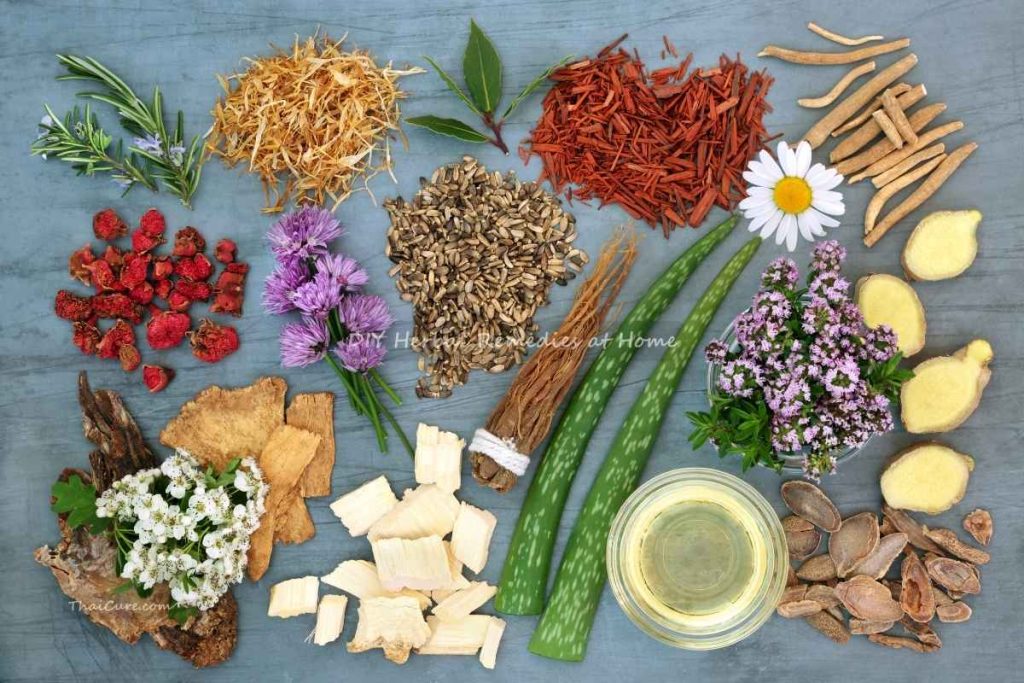
This guide shows you how to craft approachable, affordable remedies rooted in Thai know-how—without complicated tools or rare ingredients. You’ll learn quick health tonics (think lemongrass & ginger tea for digestion and comfort), a warming herbal balm you can rub onto sore shoulders, and beauty favorites like a glow-boosting mask, a tamarind body scrub, and a rice-water hair rinse. Every recipe is meant to be practical, with clear steps, safety notes, and storage tips so you can confidently make DIY herbal remedies at home.
You’ll also see when to patch test, how to infuse herbs into oils, and how to store fresh lemongrass or ginger so nothing goes to waste. Whether you’re new to Thai herbs or already love their aroma, these easy recipes bring a little spa energy to your kitchen counter and bathroom shelf. Brew a small pot of tea, gather a few fresh ingredients, and let’s turn your home into a mini apothecary—Thai style.
The Thai Herbal Edge: History, Everyday Uses & Gentle Benefits
Thai herbal knowledge lives in family kitchens, local markets, and neighborhood massage shops. Instead of hard-to-find botanicals, the tradition favors familiar plants and techniques—steeping, pounding, infusing, steaming—so remedies are simple to prepare and easy to integrate with modern routines.
- Lemongrass is loved for its bright citrus aroma and digestive calm; lemongrass tea benefits often include a lighter, soothed feeling after meals.
- Ginger adds warm spice; a mug of ginger tea for cold weather can feel like a hug for your throat and chest.
- Turmeric brings golden color and gentle brightness; it’s a star in skincare where a well-tested turmeric face mask recipe may help even tone and give skin a natural glow.
- Makrut (kaffir) lime is used for hair/scalp rinses and to invigorate inhalations.
- Plai (Zingiber cassumunar), a Thai cousin of ginger, appears in balms and compresses for muscle comfort.
- Aloe vera soothes the skin, especially after sun exposure, while coconut oil is a go-to base for body scrubs and oil infusions.
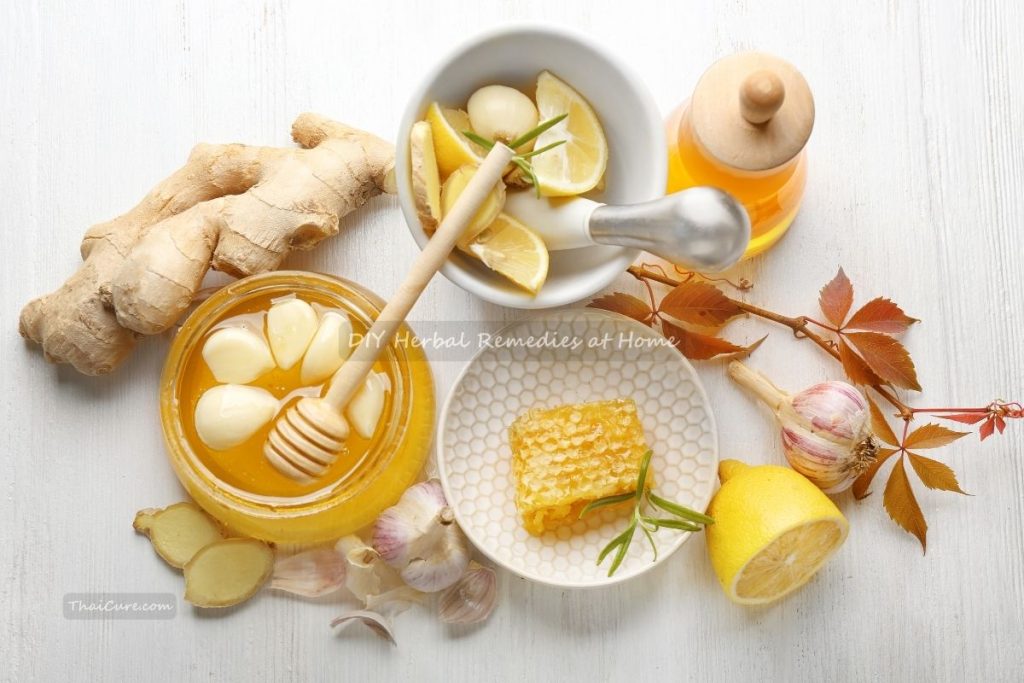
These herbs are not “cures,” but they’re wonderful companions for self-care and beauty. The Thai approach encourages listening to your body: pair a tea with rest, use topical remedies with a light hand, and prioritize consistency over intensity. As you explore Thai herbal remedies, keep notes on how your body responds—everyone’s skin and digestion are unique.
Safety mindset: Start mild, especially with potent spices like turmeric and ginger. Patch test all masks and scrubs. If you’re on medication, have allergies, or are pregnant, check with a professional first.
Part 1 — Health: Easy Thai Remedies You Can Brew or Rub
Lemongrass & Ginger Tea (comforting daily sip)
Great for: a calm stomach, cozy evenings, gentle refresh
Keywords to note: lemongrass tea recipe, ginger tea for cold, herbal tea at home
Ingredients (1–2 servings)
- 2 stalks lemongrass, trimmed and lightly crushed
- 5–7 thin slices fresh ginger
- 2 cups water
- Optional: honey or palm sugar, slice of makrut lime peel
Steps
- Bring water to a gentle boil. Add lemongrass and ginger.
- Simmer 7–10 minutes; inhale the steam as it brews (mini aroma therapy!).
- Strain, sweeten to taste, and sip slowly.
Use & Tips
- This lemongrass tea recipe is simple: for a colder day, add extra ginger (it pairs well with ginger tea for cold season).
- For an herbal tea at home routine, brew a larger pot and keep in a thermos; the aroma stays lovely for hours.
Turmeric & Ginger Tonic (bright, golden boost)
Great for: a warming pick-me-up; gentle morning ritual
Keywords to note: turmeric ginger tea recipe, DIY herbal remedies at home
Ingredients (1 mug)
- ½ tsp fresh turmeric (finely grated) or ¼ tsp ground turmeric
- ½ tsp fresh ginger (finely grated)
- 1–2 tsp honey (to taste)
- Warm water or mild coconut water
Steps
- Add turmeric and ginger to a mug.
- Top with warm water (not boiling). Stir in honey.
- Sip mindfully; the spice settles as you drink—stir occasionally.
Use & Tips
- A classic turmeric ginger tea recipe can be as light or strong as you like—start gentle.
- If you’re building DIY herbal remedies at home, this tonic is a quick, low-mess staple for busy mornings.
Steam Inhalation Bowl (kitchen-spa for clogged days)
Great for: stuffy nose, mental fog
Keywords to note: herbal inhaler DIY, Thai herbal compress benefits
Ingredients
- Handful of lemongrass leaves, a few slices of makrut lime peel
- Optional: fresh basil or a pinch of eucalyptus leaves
- 1 liter hot water, large bowl, towel
Steps
- Add herbs to the bowl; pour over hot water.
- Tent a towel over your head and the bowl; inhale for 5–8 minutes.
- Keep eyes closed; take breaks if it feels too intense.
Use & Tips
- This herbal inhaler DIY setup mimics the uplifting feel of a Thai spa.
- While not a compress, it echoes Thai herbal compress benefits—the warmth and aroma help you breathe and relax.
Thai Herbal Balm (warming rub for achy spots)
Great for: tired neck/back, after long workdays
Keywords to note: Thai herbal balm recipe, plai oil for muscle pain
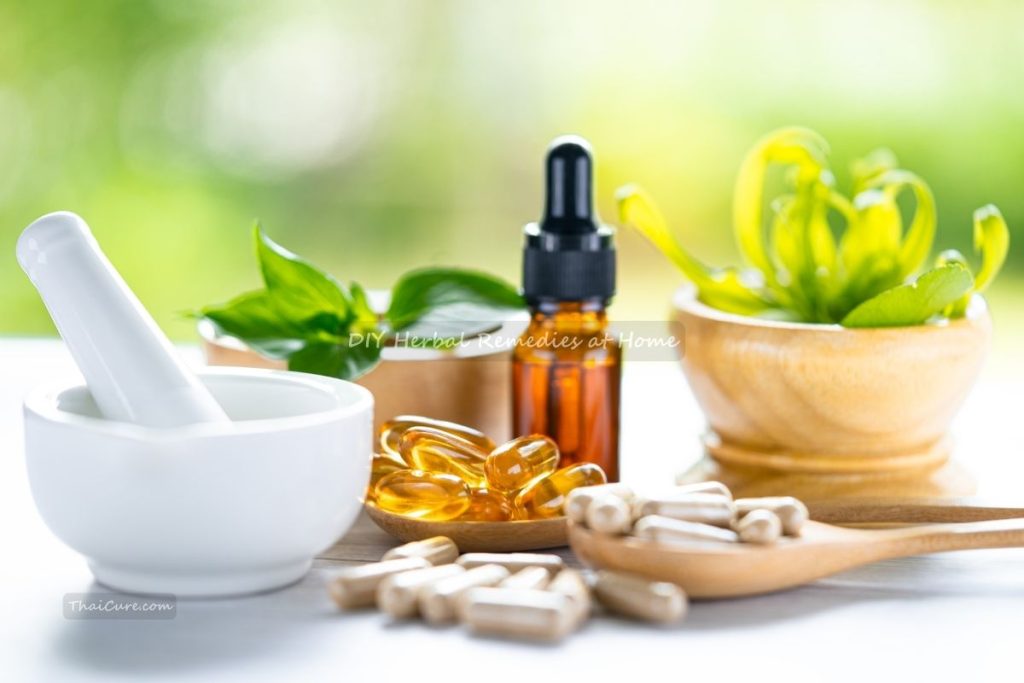
Ingredients (small jar)
- ½ cup carrier oil (coconut or sesame)
- 2–3 tbsp dried plai or fresh plai root (sliced)
- 1 tbsp grated ginger
- Optional: pinch of camphor crystals, beeswax (for a salve texture)
Steps
- Infuse the oil: Warm carrier oil with plai and ginger on very low heat (double boiler) for 45–60 minutes. Do not boil.
- Strain well. For a salve, melt in 1–2 tsp beeswax and let set in a small tin.
- Massage a thin layer onto shoulders, calves, or lower back.
Use & Tips
- A gentle Thai herbal balm recipe can be adjusted: more beeswax for travel-friendly firmness.
- If available, plai oil for muscle pain is a beautiful optional add-in for extra warmth.
Part 2 — Beauty: Glow-Giving Recipes with Thai Pantry Staples
Turmeric Face Mask Recipe (brighten & calm)
Great for: uneven tone, dullness
Keywords to note: turmeric face mask recipe, turmeric face mask benefits, patch test turmeric mask, DIY herbal remedies at home
Ingredients (1–2 uses)
- ½ tsp ground turmeric (or 1 tsp fresh, very finely grated)
- 1 tbsp plain yogurt (or aloe gel for dairy-free)
- ½–1 tsp honey
Steps
- In a small bowl, whisk ingredients into a smooth paste.
- Apply a thin layer to clean skin, avoiding eyes and eyebrows.
- Leave on 8–10 minutes. Rinse gently with lukewarm water, then splash cool water.
Use & Tips
- A classic turmeric face mask recipe! Expect a soft glow; the yogurt’s lactic acid adds mild smoothing.
- Turmeric face mask benefits can include a brighter look over time; use 1–2× weekly.
- Always patch test turmeric mask on the jawline first; turmeric can lightly stain fair fabrics and towels.
- If you’re cataloging DIY herbal remedies at home, note how your skin responds over a month before adjusting strength.
Tamarind Body Scrub (silky, citrus-sweet polish)
Great for: rough spots on arms, legs, heels
Keywords to note: tamarind body scrub recipe, DIY body scrub
Ingredients (1 jar)
- 2 tbsp tamarind pulp (seedless), soaked in warm water and strained
- ½ cup sugar (fine)
- 2 tbsp coconut oil
- Optional: pinch of sea salt for heels/elbows
Steps
- Combine strained tamarind pulp with sugar and coconut oil.
- On damp skin, massage in circles 60–90 seconds per area.
- Rinse thoroughly; pat dry and moisturize.
Use & Tips
- The gentle acids in tamarind boost the polish of this DIY body scrub.
- Label your jar and store in the fridge for up to 1–2 weeks.
Rice-Water Hair Rinse (shine with a pantry classic)
Great for: dull hair, buildup
Keywords to note: rice water for hair rinse, natural hair remedies
Ingredients (2–3 uses)
- ½ cup uncooked rice
- 2–3 cups water
- Optional: a small strip of makrut lime peel
Steps
- Rinse rice once; soak in fresh water 20–30 minutes, swishing occasionally.
- Strain; keep the water. Use after shampoo, before conditioner.
- Pour over scalp and lengths, massage gently, leave 2–3 minutes, then rinse.
Use & Tips
- A time-tested rice water for hair rinse can leave a soft, reflective shine.
- Add “natural hair remedies” rotation: one week rice water, the next week aloe-coconut mask (below).
Aloe-Coconut Soother (skin & hair TLC)
Great for: sun-touched skin, dry ends
Keywords to note: aloe vera for sunburn, coconut oil hair mask recipe
Ingredients
- 2 tbsp aloe vera gel (fresh or pure store-bought)
- 1–2 tsp coconut oil (lightly warmed to liquid)
Steps
- Blend aloe and coconut oil until uniform.
- For skin: smooth a pea-sized amount over dry or sun-exposed areas (spot test first).
- For hair: massage a small amount into mid-lengths/ends; leave 20 minutes, shampoo lightly.
Use & Tips
- For aloe vera for sunburn, keep the gel in the fridge and apply cool; avoid broken skin.
- As a coconut oil hair mask recipe, use sparingly to prevent heaviness, especially on fine hair.
Part 3 — Smart Safety & Common-Sense Precautions
Herbal self-care should feel gentle, not stressful. Keep these points in your routine:
- Patch testing: Always patch test masks and scrubs (especially turmeric, tamarind, and new oils).
- Pregnancy & medications: Herbal teas are mild for most people, but ask a professional first—particularly about is lemongrass tea safe during pregnancy or if you take blood thinners (ginger/turmeric can be warming).
- Eyes & sensitive areas: Avoid eye area with masks/scrubs; rinse immediately if irritation occurs.
- Staining & laundry: Turmeric can stain light towels. Use a dark washcloth and rinse sinks/showers after use.
- Kids: Keep balms/scrubs away from small children. For teens, supervise and emphasize patch tests.
- Stop if irritated: Redness, itching, or discomfort means discontinue and switch to milder options.
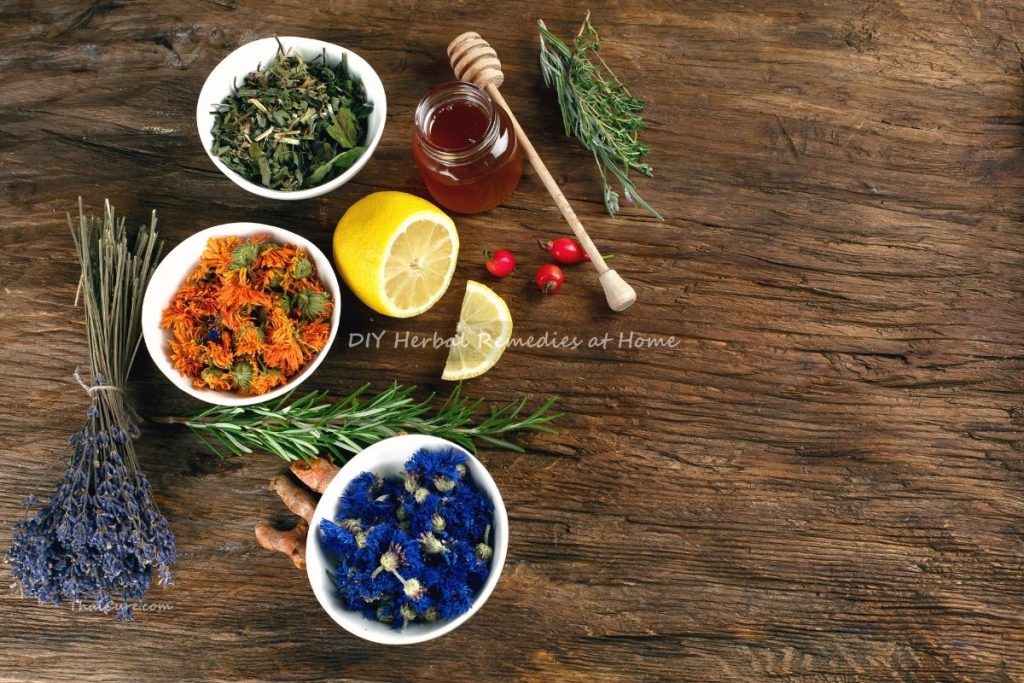
When in doubt, dilute: fewer minutes on skin, fewer slices in tea, less frequency each week. A mindful approach keeps your DIY herbal remedies at home relaxing and sustainable.
Part 4 — Storing Herbs & Infusing Oils Like a Pro
A little organization makes your home apothecary shine:
- Refrigerate fresh herbs you’ll use soon; wrap lemongrass in a slightly damp towel and place in a bag—this answers how to store fresh lemongrass for a week or more.
- Freeze for later: Slice ginger and lemongrass, lay on a tray, freeze, then bag—perfect for quick teas.
- Drying: Air-dry thin leaves/peels (lemongrass, makrut peel) in a shaded, ventilated spot. Store in airtight jars.
- Oil infusions: If you’re curious how to infuse herbs in coconut oil, use a double boiler on very low heat; keep the jar lid ajar to prevent moisture buildup. Strain thoroughly and label with date and herb used.
- Shelf life: Fresh aloe mixes last just a few days in the fridge. Oil-based balms can last 2–3 months if stored cool and clean.
With a simple system—labels, a few jars, and a weekly plan—you’ll have everything ready for quick cups of tea, a last-minute mask, or a soothing balm.
Your First 7-Day Thai Herbal Plan
To make these DIY herbal remedies at home truly stick, try this beginner-friendly rhythm:
Day 1 (Sun): Brew Lemongrass & Ginger Tea after lunch. Evening, mix the turmeric face mask recipe and patch test; if fine, apply for 8 minutes.
Day 2 (Mon): Steam inhalation bowl at night—short and sweet.
Day 3 (Tue): Turmeric-Ginger Tonic in the morning; light shoulder rub with your Thai herbal balm.
Day 4 (Wed): Rice-Water Hair Rinse after shampoo; air-dry partially for soft texture.
Day 5 (Thu): Aloe-Coconut Soother on dry patches; journal skin response.
Day 6 (Fri): Lemongrass & Ginger Tea; if you liked tamarind, make a small tamarind body scrub recipe batch for weekend use.
Day 7 (Sat): Weekend spa hour! Revisit the turmeric face mask benefits by repeating your mask; follow with aloe on cheeks and a gentle scalp massage.
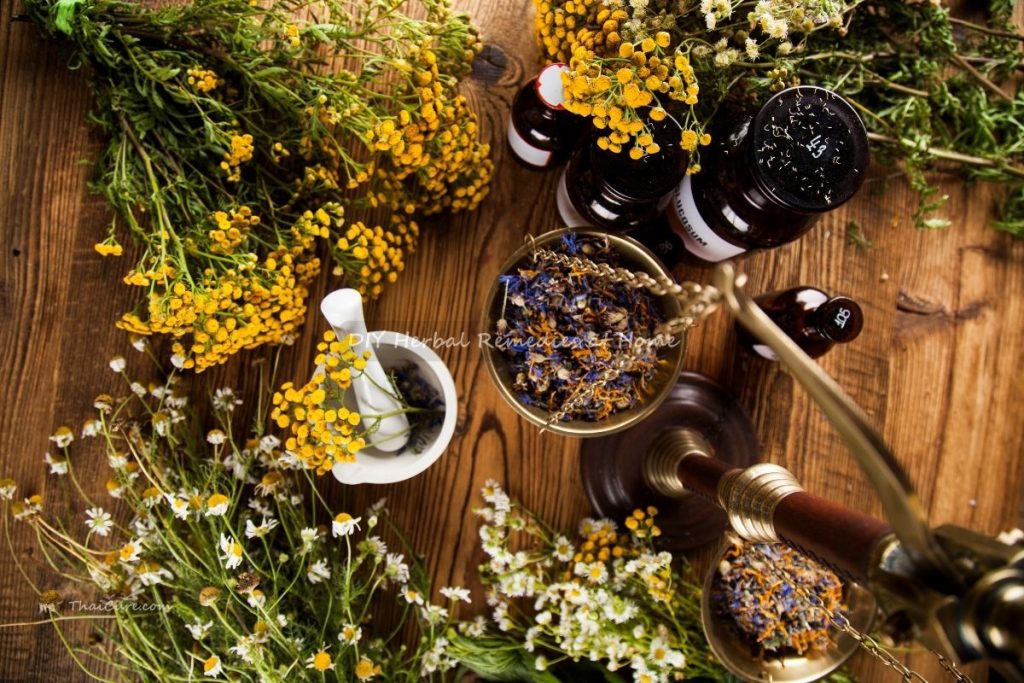
Keep notes: Did ginger feel too warm? Was turmeric staining a hassle? Adjust recipes and frequency. The best DIY herbal remedies at home are the ones you’ll actually do—consistently and joyfully.
Conclusion: A Calm, Glowing Routine You’ll Actually Keep
The best wellness routine is the one that fits your life. With Thailand’s friendly herbs, you can craft DIY herbal remedies at home that feel doable and delightful—teas that comfort, balms that warm, and masks that brighten without fuss. Your kitchen becomes a micro-apothecary; your bathroom, a quiet salon.
Start with one or two favorites: the lemongrass-ginger tea on cool evenings, or the turmeric face mask recipe on a relaxed Sunday. Keep notes, adjust strengths, and honor how your body responds. Over a month, you’ll learn which flavors and textures feel best, which routines stick, and which aromas make you smile. That’s the heart of Thai herbal remedies—gentle, attentive, and rooted in everyday life.
When you’re ready, explore more: add a makrut-lime hair rinse, try a plai-ginger balm variation, or infuse coconut oil with lemongrass. Each small step builds confidence and keeps self-care simple. May your home be filled with citrusy steam, golden pastes, and the quiet satisfaction of caring for yourself—one easy recipe at a time.
FAQs
Q1: My turmeric mask stains—what now?
Apply a very thin layer, shorten time to 5–7 minutes, and rinse with lukewarm water. Follow with a gentle cleanser if needed. Use darker towels. The turmeric face mask recipe can still work beautifully at a lower strength.
Q2: Ginger feels too spicy in tea—how do I balance it?
Cut the slices thinner, simmer a shorter time, and add a bit more lemongrass or honey. This keeps your herbal tea at home soothing, not intense.
Q3: How often should I do the rice-water rinse?
Start once weekly. If hair feels stronger—not stiff—try twice. If it feels coated, reduce frequency. Pair with the coconut oil hair mask recipe once every other week, used sparingly.
Q4: Can I swap yogurt in the mask?
Yes—use aloe gel for a dairy-free version of the turmeric face mask recipe. If you have very sensitive skin, dilute the turmeric further and always patch test turmeric mask first.
Q5: Is lemongrass tea okay during pregnancy?
Always ask your provider first. Many people enjoy lemongrass in cooking, but tea concentrates the herb. It’s wise to confirm whether is lemongrass tea safe during pregnancy for your specific situation.
Q6: What if I don’t have plai?
Your balm still works with ginger; add a touch of camphor if you like. If you later find plai, you can re-infuse a new batch—this aligns with the adaptable spirit of Thai herbal remedies.
Q7: Can I store turmeric paste?
For freshness, mix just before use. If needed, pre-blend dry turmeric and honey (no water) in a tiny jar for a week and add yogurt/aloe at application time.


